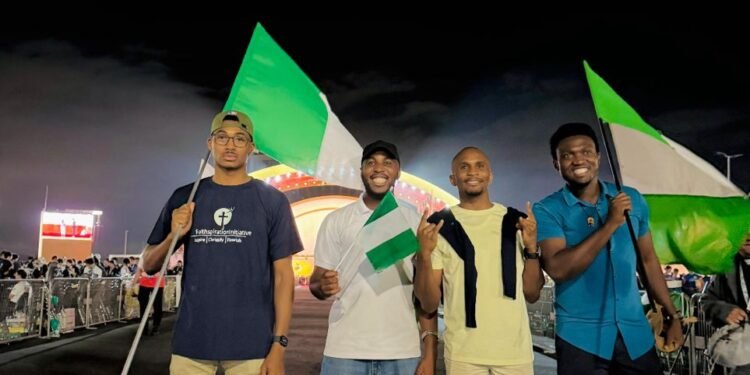By Charles Igwe
Rome bore witness to a tidal wave of youthful energy, faith, and hope as over one million young Catholics from around the world gathered for the 2025 Jubilee of Youth. The event, held under the banner “Pilgrims of Hope,” was a powerful declaration that, even in an age marred by conflict, cynicism, and cultural confusion, young people still thirst for God, community, and meaning.
The Jubilee, which climaxed with a prayer vigil on August 2 and a closing Mass on August 3 at the historic Tor Vergata site, became the largest Catholic gathering in Rome since the turn of the millennium. By sheer numbers alone, it exceeded papal funerals and rivalled World Youth Day in scale, prompting even local authorities to label it one of the biggest gatherings in Europe over the past 25 years. The logistical backbone of this massive event was staggering—metro trains in Rome were dispatched every three minutes after the closing liturgy, thousands of volunteers facilitated movement across key sites, and two years of meticulous planning underpinned every sacramental and pastoral gesture offered throughout the week.
Yet, beyond the impressive numbers and grand ceremonies, the Jubilee was also marked by moments of intimate grace, raw humanity, and quiet surprises that left an indelible impression on both participants and observers.
Among the most moving aspects of the week was the powerful penitential liturgy held at Circus Maximus, where over 1,000 priests made themselves available for confessions. By day’s end, more than 28,000 young people had received the sacrament of reconciliation—many of them kneeling under the hot Roman sun well into the evening. This visible hunger for mercy and renewal was a living witnessing to the spiritual thirst that animates today’s Catholic youth, far from the stereotype of apathy often attributed to their generation.
There were also deeply human stories that emerged. The presence of young people from a juvenile correctional facility reminded all that the Church’s message of hope and transformation is not reserved for the perfect, but rather reaches into the margins. And then there were the painful reminders of our fragility: two young pilgrims, Pascale Rafic from Egypt and Maria Cobo Vergara from Spain, died during the Jubilee—one suddenly from cardiac arrest, the other after a long illness. A third was hospitalized. Their passing cast a somber note on the week, but their courage and faith were remembered in prayers and tributes, transforming their stories into quiet offerings of hope.
Throughout the event, Pope Leo XIV was a steady presence. He walked with the youth not only physically but spiritually, offering reflections, engaging in conversations, and ultimately charging them with a mission: to become signs that “a different world is possible.” His message echoed across the fields and piazzas of Rome and resonated deeply.
The weeklong celebration was a festival in every sense—marked by music, laughter, friendships, and a visible unity in diversity. From impromptu dance sessions in city squares to late-night rosary processions, the youth turned Rome into a canvas of living faith. Their presence re-evangelized the Eternal City, reminding locals and visitors alike of the enduring relevance of Christ in a modern world.
Perhaps the most exciting news for the attendees came at the end of the event: the announcement that the next World Youth Day will take place from August 3 to 8, 2027, in Seoul, South Korea. The anticipation rippled through the crowd, planting seeds of pilgrimage and prayer in hearts already set on fire.







































